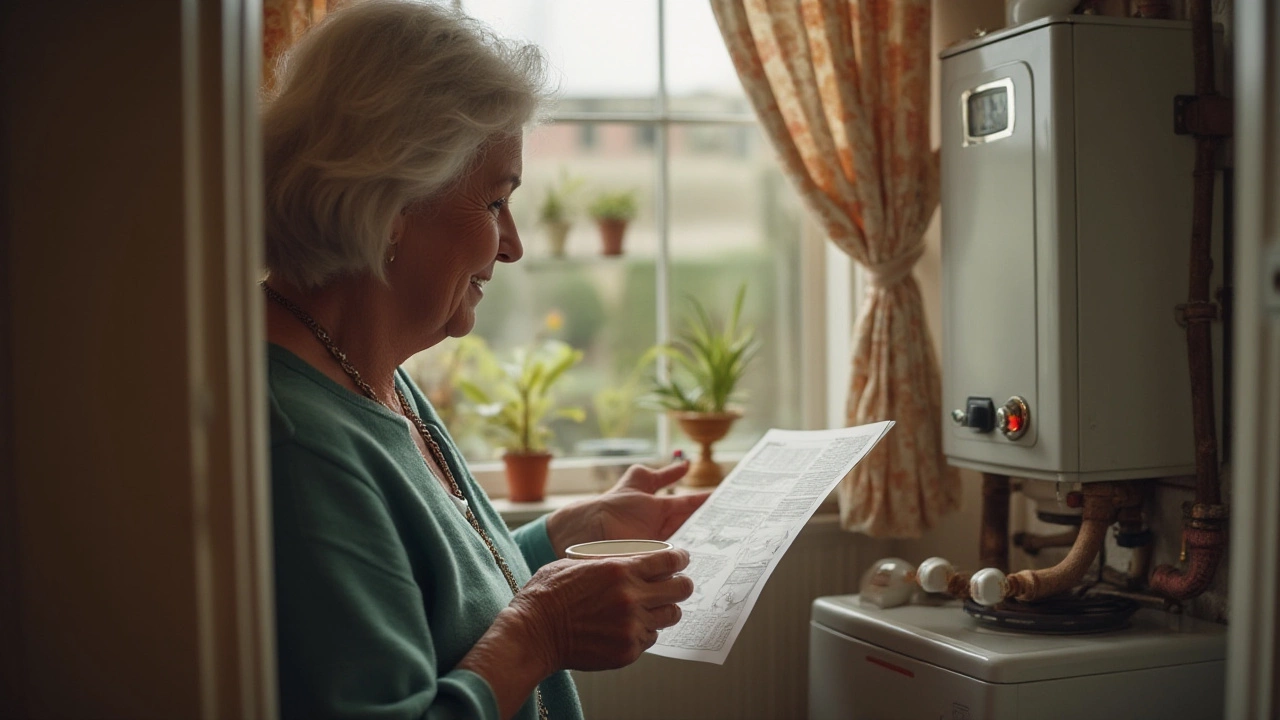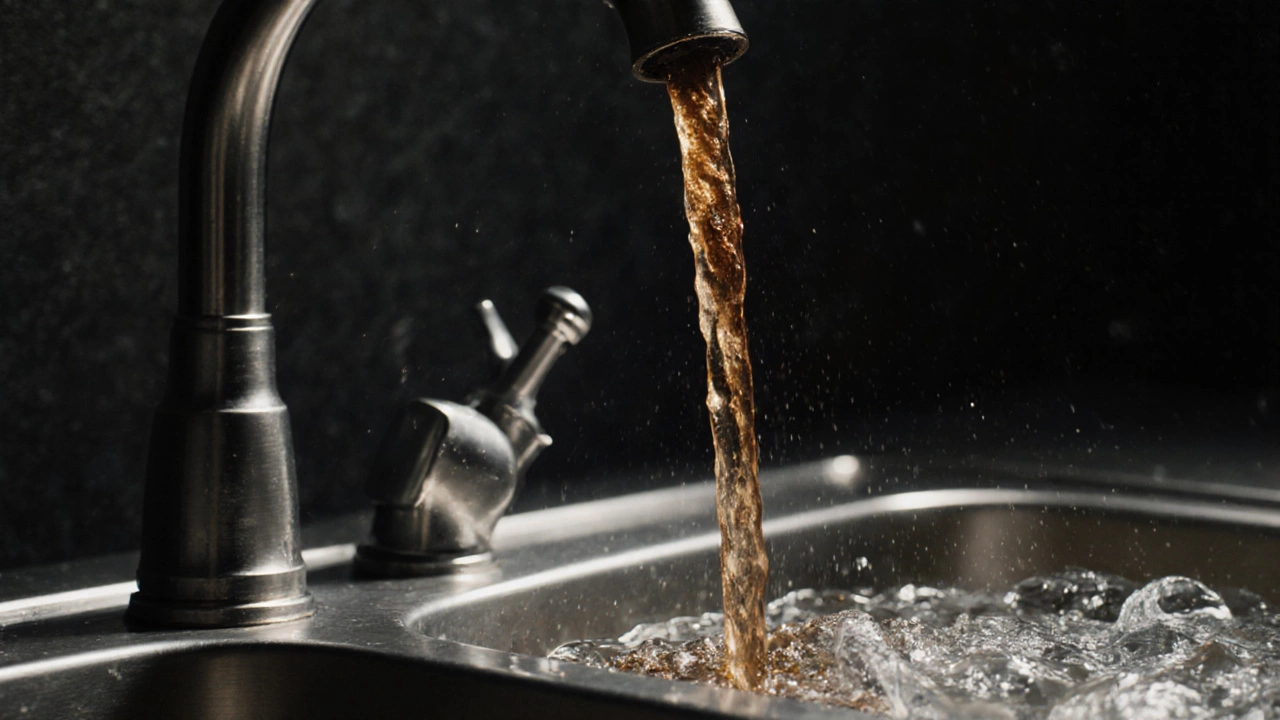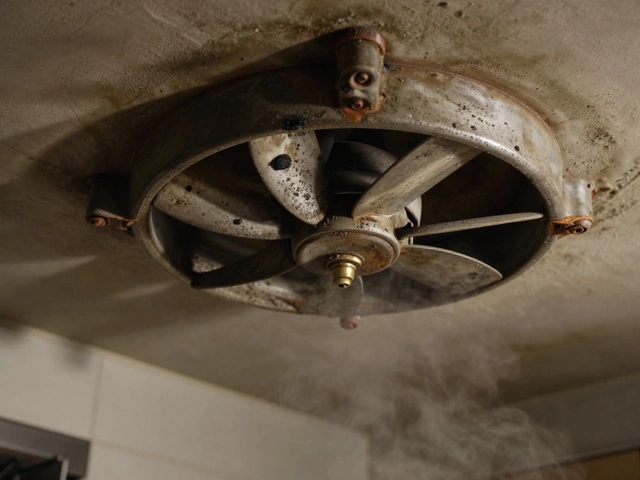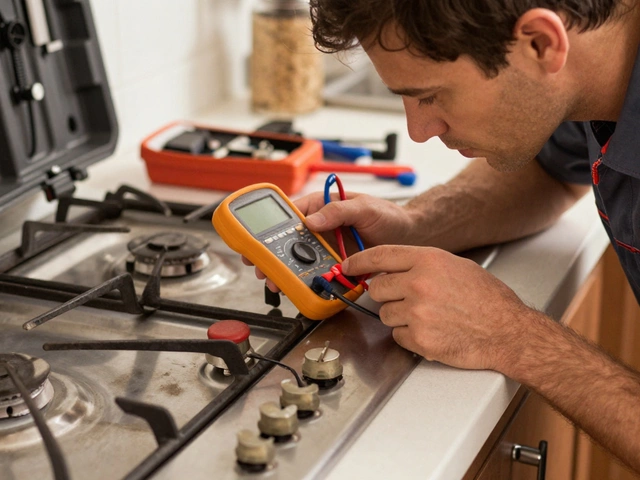Imagine waking up on a chilly morning, hoping for a hot shower to start your day, only to realize the water is cold. A malfunctioning hot water heater can disrupt daily routines and become a major inconvenience. Understanding why these devices suddenly quit can be a game changer, not just for immediate comfort but also for long-term maintenance.
Hot water heaters, while generally reliable, can encounter various issues—some minor, some more severe—that interrupt their operation. Before diving into a sea of worry, it's essential to assess the basics: from resetting the system to checking whether the power supply is intact. Often, a simple DIY fix might just be the solution.
This article aims to guide you through the common pitfalls that lead to a non-working heater and equip you with tips to troubleshoot and maintain it efficiently. By the end, you'll be armed with knowledge to tackle minor issues and recognize when it’s time to seek professional help.
- Common Reasons for Hot Water Heater Failure
- Signs Your Water Heater Might Be Failing
- Quick Fixes and DIY Troubleshooting
- When to Call a Professional
- Tips for Preventive Maintenance
Common Reasons for Hot Water Heater Failure
The hot water heater is an unsung hero in our homes, toiling away in closets and basements, often forgotten until something goes wrong. One morning, the water that should be piping hot ends up chilling instead, leaving us to ponder the reasons behind this unfortunate turn of events. An immediate dive into common causes may clear the fog of confusion. First off, it’s essential to comprehend both the mechanical and electrical factors at play. Something as simple as a tripped circuit breaker could be cutting power to the unit. Overloads, perhaps from too many devices running simultaneously, might be causing this innocent oversight. Checking and resetting the circuit breaker is among the first steps a homeowner can take.
The thermostat plays a pivotal role in maintaining the desired water temperature. A malfunctioning thermostat could misjudge the water’s warmth, leaving you with an undesirably cold shower. It’s worth noting that a thermostat can either be calibrated improperly or might have just reached the end of its functional life. On occasion, sediment build-up inside the tank could explain the issue. Minerals from hard water settle at the bottom over time, leading to loud noises, reduced efficiency, and eventual failure. Flushing the tank annually helps prevent this problem, extending the longevity of the heater.
"Failure to regularly flush your water heater can significantly reduce its efficiency and lifespan," advises the American Water Works Association, emphasizing routine maintenance to optimize performance.
Another often overlooked aspect is the heating element itself. Many water heaters have two elements, each responsible for different temperature ranges. If one fails, particularly the upper element, it might cause tepid or cold water to flow. Replacing these elements is usually a straightforward task but requires turning off the power to avoid electrocution. Not to forget, the pressure relief valve—a key safety feature—sometimes sticks or leaks, which can also disrupt your water heater’s operation. Regular testing and replacement are critical to avoid mishaps. Understanding these aspects ensures you're equipped to identify and address common water heater problems in a timely manner.
With this knowledge at your fingertips, the path to efficient troubleshooting becomes clearer. Remember that while some fixes are within reach for the avid DIYer, certain issues require a seasoned professional to ensure safety and effectiveness. As you revisit these common pitfalls, the hope is to restore the harmonious hum of this essential home appliance, keeping chilly mornings at bay.
Signs Your Water Heater Might Be Failing
The comfort of a warm bath or shower is something most of us take for granted, until the day you're greeted with icy water. Recognizing early warning signs that your hot water heater is on the brink of malfunction can save you from the shock of a cold shower and prevent further damage to your home. One tell-tale sign is noise. If your heater begins to clank or emit unusual sounds, it's usually due to sediment buildup at the tank's bottom. This sediment makes its way to the heating element, causing the system to rattle. Listening carefully to these sounds is crucial, as ignoring them can lead to more severe complications like tank leaks.
Water temperature fluctuations are another red flag. If you notice that your water runs hot, then cold, and then hot again, your thermostat or one of the heating elements may be malfunctioning. Routine maintenance helps but can’t always prevent wear and tear on these components. Sometimes, the problem could stem from electrical issues; a broken dip tube might mix cold and warm water within the tank, leading to inconsistent heating.
"The consistency in water temperature is one of the first things to check when diagnosing water heater problems," advises James Caldwell, a certified plumbing technician with over a decade of experience.
Another crucial indicator is the presence of rusty water. When you turn on your taps and see discolored water pooling in your sinks, it could mean the anode rod is failing or there's corrosion inside the tank. While rusty water doesn't always mean your tank will immediately fail, it's a sign that replacement or repair is imminent. Aim to replace the anode rod as a preventative measure every couple of years to extend the lifespan of the tank.
Pay close attention to leaks. Even a small amount of water pooling underneath the heater is a strong indicator of trouble. Water should never escape the tank, so a leak might mean that its inner body is cracked. Over time, pressure buildup can lead to full-blown fractures in the tank. Before you know it, flooding becomes a real danger. Therefore, it's vital to act quickly; reach out to a professional if tightening bolts or valves doesn't stop the leakage.
Inconsistent delivery of hot water can also point to aging components. Over time, water heaters lose their efficiency. If you've noticed that you're not getting as much hot water as you used to, or if it seems to run out quicker than it used to, your heater might not be operating as efficiently as it should. This loss in function often indicates that your system is simply reaching the end of its life span.
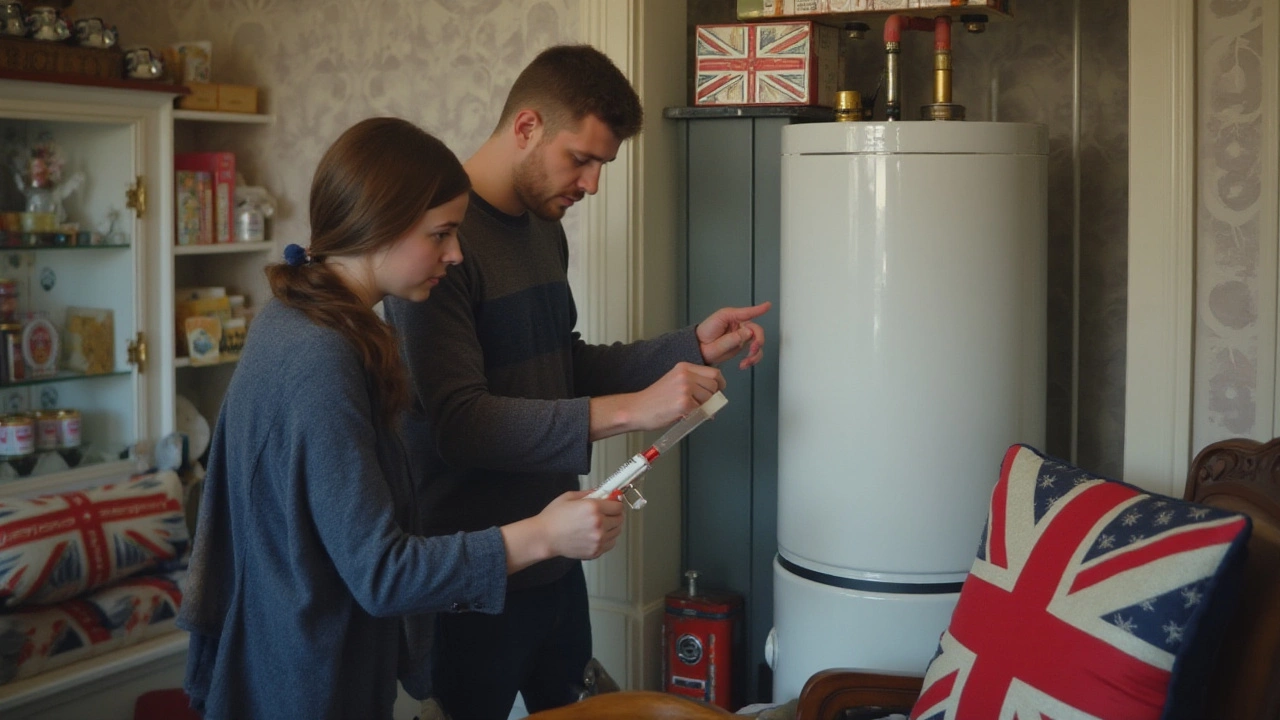
Quick Fixes and DIY Troubleshooting
Tackling a sudden hiccup with your water heater doesn't always require the intervention of a professional. Many times, the problem may be something fairly simple that you can address on your own. Before you jump into troubleshooting, make sure safety is your top priority. Always turn off the power supply to the unit and, if it's a gas heater, turn off the gas valve first. Now, let's dive into some potential quick fixes.
Resetting the Thermostat: Before going detailed, simply resetting your thermostat can sometimes work magic. Look for a reset button near the thermostat. If you've experienced a power surge or outage, it might have tripped the unit. Press and hold it for a few seconds and see if it springs back to life. Don't be surprised if this simple action is all it takes. An anecdote from the Homeowners' Repair Digest notes, "80% of homeowners asking for technical help on heaters had inadvertently ignored the power of a simple reset."
Inspecting the Circuit Breakers: Tripped circuit breakers can often cut off the electricity supply to your electric heater. Head to your electrical panel and check if any switches are in the 'off' position. Flip them back to ‘on’ and see if your heater resumes normal operation. It’s a handy tip that most seasoned home savers are quick to point out. What seems like a dead appliance might just be waiting for you to add a simple flip of the switch!
Checking the Heating Elements: For electric heaters, the heating elements can sometimes burn out, rendering the device useless. It involves some dismantling to access these elements, usually located behind detachable panels on the side of the tank. Use a multimeter to test conductivity; a functioning element should show continuity on the meter. If not, it may need replacing. For those who enjoy a weekend project, kits with replacement parts are readily available at hardware stores.
Flushing the Tank
Another simple way to breathe life back into a water heater relates to sediment buildup. Over time, minerals settle at the tank's bottom, causing it to be less efficient or even block the outlet. A regular tank flush is an easy weekend project. First, switch off the heater. Connect a hose to the drain valve and lead the water out safely, preferably into a safe disposal spot, away from plants and pets. Open the valve and let all the water flow out, carrying debris with it. Close the valve and refill the tank, being cautious with the incoming pressure.Inspecting for Leaks
While it doesn't directly impact the heater's performance, leaks can cause the heater to stop functioning due to lowered water pressure. Walk the perimeter of the tank, checking for any water pooling under it or dripping from valves or connectors. In some cases, a simple tightening of a valve or fitting can rectify this. If the tank itself shows leaks, it may call for professional attention. Remember: monitoring and maintaining your heater can prolong its life, bringing you endless streams of comfort during those cold days!When to Call a Professional
Sometimes, even the handiest of homeowners encounter problems with their hot water heater that go beyond DIY solutions. Knowing when to call in a professional can prevent further damage and ensure your water heater functions efficiently. One key indicator is a persistent or recurring issue that, despite your best efforts, just won't go away. Whether it's a *broken water heater* that can't maintain temperature or odd noises suggesting internal mechanical failure, these symptoms often mean it's time for an expert assessment.
Another scenario that merits professional attention is the presence of water pooling around the base of your heater. This could indicate a major problem like a leak in the tank, which if unchecked, can lead to extensive water damage. You might also notice rusty water coming from your faucets, a sign that the interior of your tank might be corroding. In both cases, a certified technician will have the tools and expertise to safely resolve these issues, potentially saving you from more costly repairs in the future.
If your *hot water repair* attempts often lead to temporary relief but the problem resurfaces, your heater might have a worn-out component or electrical failure. As tempting as it may be to tinker with internal components, this can be risky without proper training. Handling electrical elements without the requisite know-how can not only harm the appliance but also pose safety hazards.
Frequently, homeowners feel overwhelmed by the complexities of a *water heater problems* diagnostic, such as navigating the intricate wiring or understanding the thermostat system. According to the U.S. Department of Energy, modern water heaters are designed to last between 10 to 15 years, provided they receive regular professional inspections and maintenance. A seasoned professional can detect underlying issues that aren't obvious at first glance—which underscores the importance of routine check-ups.
Todd Carson, a recognized expert in HVAC systems, once asserted, "A qualified technician not only repairs but also educates the homeowner on preventive measures to enhance the longevity of their *hot water heater*."
When it comes to considering a complete replacement—often a puzzling decision—consulting with a professional is beneficial. They can provide a thorough evaluation and advice you on whether investing in repairs is worthwhile or if an upgrade to a more energy-efficient system makes more sense. This not only ensures that you make a cost-effective choice but also aligns with modern efficiency standards and energy savings.
Engaging a professional in these situations not only guarantees a higher quality repair but also offers peace of mind. Their experience allows them to quickly identify and remedy issues while ensuring your *hot water heater* operates safely. Regular preventive maintenance checks conducted by a professional may further improve efficiency, lower utility costs, and extend your water heater's lifespan.
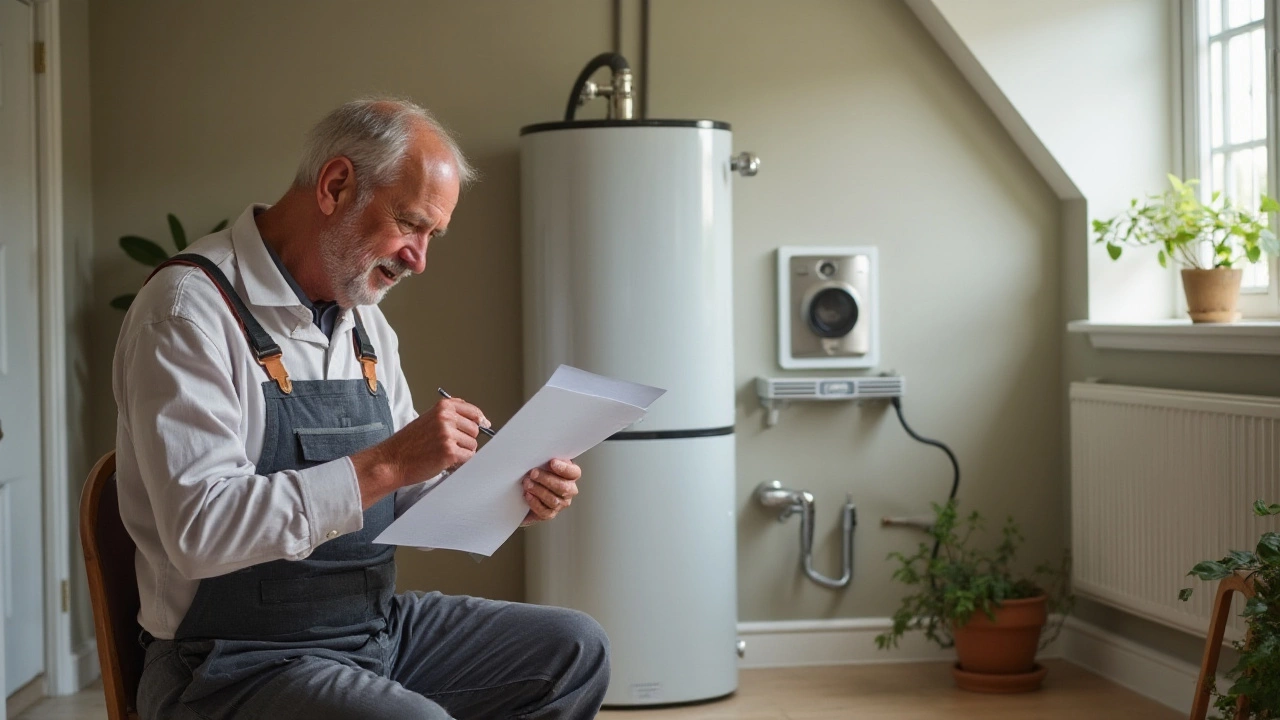
Tips for Preventive Maintenance
To ensure your water heater continues to operate efficiently and reliably, integrating regular preventative maintenance into your routine can be a life-saver. Many homeowners underestimate the value of routine checks, which can significantly extend the lifespan of their heater. A primary step in maintenance is periodically examining the water heater for any visible signs of wear and tear. Observing any rusting or corrosion on the exterior could signal internal issues that might escalate if not addressed promptly.
Another critical aspect of maintenance is the regular flushing of the tank. This process helps eliminate the sediment build-up at the bottom of the tank, which if neglected, can lead to ineffective heating and even damage to the heater itself. Experts suggest flushing the hot water heater once a year to maintain its health. This sediment layer can act as an insulator, making your heater work harder and use more energy.
Inspecting the anode rod every couple of years is another key practice. This rod is designed to attract corrosive elements in the water, preventing them from damaging the tank. If the rod looks overly corroded or reduced to less than half an inch in thickness, it's time for a replacement. Ignoring the anode rod's condition could accelerate tank deterioration, leading to potential leaks. As energy expert Jane Smith observes,
"Routine water heater maintenance isn't just about extending equipment lifespan; it contributes significantly to energy conservation and cost savings."
Temperature settings are another small but influential factor. Keeping your water heater thermostat at around 120 degrees Fahrenheit is optimal for most households. Higher settings might not only mean higher energy bills but also risk scalding water temperatures. Additionally, regularly checking and insulating your heater's pipes, especially in colder climates, can prevent heat loss, enhancing efficiency tremendously.
While these actions are manageable for many, occasionally calling in a professional can be wise. A professional plumber can perform detailed inspections, catching issues an untrained eye might miss. Combining DIY efforts with professional checks can provide peace of mind and ensure your water heater functions optimally year-round. Remember, a well-maintained heater is not just about avoiding cold showers but also about cost efficiency and conserving energy in the long run.
